#Triassic fossil block
Explore tagged Tumblr posts
Photo

Fossil Fish Teeth Bones & Coprolite Block | Westbury Formation | Upper Triassic Aust Cliff UK | Authentic Specimen
This listing is for an exceptional and genuine fossil block containing fish teeth, fish bones, and coprolite (fossilised faeces), discovered in the famous fossil-bearing strata of Aust Cliff, located near Bristol, UK. The specimen originates from the Westbury Formation, part of the Penarth Group, dating back to the Upper Triassic Period (~208–201 million years ago).
This richly fossiliferous layer is world-renowned for its diverse vertebrate fossil assemblage, often referred to as the "fish, reptile and coprolite bed". The block offers a rare combination of preserved fish elements and coprolite, highlighting a dynamic nearshore marine depositional environment likely associated with a lagoonal or estuarine setting with variable salinity.
The fossil remains include small bones and well-preserved teeth, some attributable to prehistoric genera like Severnichthys and others possibly linked to early ray-finned fishes and primitive sharks. The coprolite present is often linked to larger fish or marine reptiles, offering insight into feeding behaviour and paleoecology.
Geological Context:
Formation: Westbury Formation
Group: Penarth Group
Age: Late Triassic (Rhaetian Stage)
Location: Aust Cliff, near Bristol, England
Depositional Environment: Shallow marine/lagoonal, occasionally brackish
Biozone: Rhaetian bone bed, no narrower zone designation possible from available data
Fossil Features:
A multi-fossil matrix including fish teeth, fish bones, and dark mineralised coprolite
Distinctive from this rare UK site, known for significant vertebrate fossils
Cleaned, stabilised, and preserved by our preparator Alison
Specimen Discovery & Treatment: Discovered on 07 April 2025 by our own team members, Alister and Alison. Carefully prepared, cleaned, and treated for long-term preservation by Alison.
Scale cube shown in photo = 1cm. Please see photos for exact sizing and specimen detail.
Authenticity Guarantee: All of our fossils are 100% genuine specimens and come with a Certificate of Authenticity.
This is the actual fossil you will receive — a one-of-a-kind glimpse into the Late Triassic marine world.
#Fossil fish teeth#fish bones#coprolite fossil#Aust Cliff fossil#Westbury Formation#Penarth Group#Upper Triassic fossil#UK Triassic fossil#reptile coprolite#fossil bone bed#fish fossil UK#Alister Alison discovery#genuine fossil specimen#certificate of authenticity#paleontology collectible#fossil bed Bristol#Triassic fossil block#rare fossil matrix#UK fossil dig
0 notes
Text

#Archovember Day 24 - Araripesuchus wegeneri
The notosuchians were were such a diverse group of pseudosuchians you’d think they came from the Triassic. But no, this group of “mammal-mimicking” crocodylomorphs lived during the Jurassic and Cretaceous. One such Cretaceous notosuchian was Araripesuchus. This genus was widespread across the Southern Hemisphere, represented by at least 6 different species, mostly identified by their unique teeth. Today’s species is Araripesuchus wegeneri, the “Dog Croc.”

Living in Early Cretaceous Niger, Araripesuchus wegeneri appeared to be an omnivore, eating both plants and insects like grubs. Its common name “Dog Croc” is a reference to not only the dog-like shape of its skull, but also its unique caniniform teeth. Araripesuchus wegeneri fossils were found in a block with five skeletons packed together, so they may have even been social. All species of Araripesuchus had large eyes and thin osteoderms covering their body. They were likely more agile on land than in water, due to their long limbs. It could have possibly used its long legs to sprint to the water in order to flee predators, then used its muscular tail to swim.
There was a significant amount of pseudosuchian diversity in the Elrhaz Formation. Araripesuchus wegeneri would have lived alongside the similarly sized, duck-billed notosuchian Anatosuchus. It would have had to look out for the giant “Super Croc”, Sarcosuchus (perhaps the reason it had adapted for leaving the water so easily!) It would have also lived alongside the long-snouted fish-eater Stolokrosuchus. There were dinosaurs here as well, such as the iguanodont Lurdusaurus, the hadrosaur Ouranosaurus, the carcharodontosaurid Eocarcharia, the abelisaurid Kryptops, the spinosaurid Suchomimus, and the duck-billed sauropod Nigersaurus.
#my art#SaritaDrawsPalaeo#Araripesuchus wegeneri#Araripesuchus#notosuchians#pseudosuchians#archosaurs#archosauromorphs#reptiles#Archovember#archovember2023
13 notes
·
View notes
Text
A lethal pulse of ultraviolet (UV) radiation may have played a role in the Permian-Triassic mass extinction event, roughly 250 million years, fossilized pollen grains reveal.
Plants rely on photosynthesis to convert sunlight into energy, but they also need a mechanism to block out harmful UV-B radiation.
Dying in the Sun: Direct evidence for elevated UV-B radiation at the end-Permian mass extinction
#paleontology#mass extinction#permian#pollen samples#paleontologist#uv radiation#plant evolution#evolution#photosynthesis#science#biology
5 notes
·
View notes
Text
BIO STUDYING CRAMING LOL
A gene pool refers to the combination of all the genes (including alleles) present in a reproducing population or species.
GEOGRAPHICAL CONTEXT: where populations are as speciation proceeds applies to all organisms
Sympatric speciation: Speciation without geographic isolation
Allopatric (different places) speciation = Speciation after geographic evolution (Live in different places and there's no gene flow between them)
Isolation populations adapt to local conditions in different regions
Reproductive isolation can evolve as accidental by product
They can't/won't interbreed if they meet again
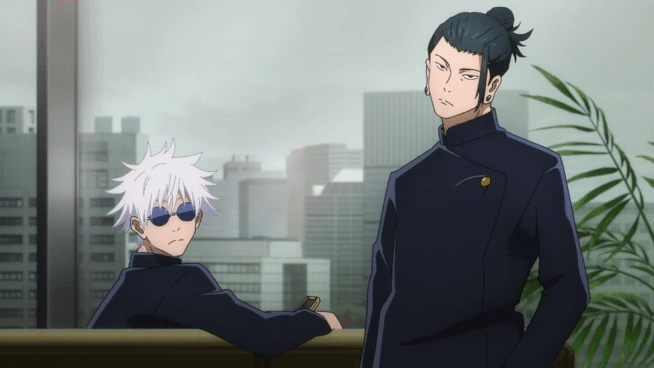
Where does biodiversity come from?
Diversity within species -> microevolution
Where does it go?
Extinction (loss of species)
Family contains 1 to many genera
Genus contains 1 to many species
Speciation + extinction: Biodiversity increases and decreases
Mass extinction: Rapid loss of large % of biodiversity
There have been 5 so far
Biodiversity takes over 10s of million years to recover
Biggest example: Permian-Triassic extinction
750% of families lost
Best supported reason why: run away climate change
Anthropocene Extinction
New geological age, beginning @ industrial evolution
Ex: Insects (group with great biodiversity)
Extinction will have reverberating effect on biodiversity of other groups

Ways complex traits can evolve:
1) Simple transformation series: (what it does) stays the same
1A) Series of (gradual) stages from ancestral to present day forms
Trait function stays the same
Ex: Horse feet: evolution towards use of middle toe for walking
1B) Plausibility argument
Do prospectively intermediate stages exist in different species
Ex: Eye evolution in molluscs (squids in this case)
Flat retina: Cells with opsin on skin
Cup shared retina: Detects light direction
Pinhole pupil, lens, iris: improves acuity (at diff light levels)
2. Functional shift: Function changes as trait evolves
2A) A trait with 2 functions specialize to do only one of those functions
2B) 2 traits sharing the same function specialize to do diff functions, or one is lost
3. Simplify a more complex trait
Ex: Insects have 2 pairs of wings
All flies have 1 pair of wings, reduced hindwings (also a functional shift)
Irreducibly complex? Eliminate all three!

ORIGIN OF LIFE
SOMETHING TO UNLEARN: ORGINATED IN 'PRIMORDIAL SOUP' OF CHEMICAL BUIDLING BLOCKS AND LIGHTNING STRIKES. THIS DID NOT HAPPEN
Geological context:
1) Age of Earth: ~ 4.6 billion years old
2) Oldest bit of crust: Zircon crystals 4.37 billion years old
3) Oldest rocks: ~4.2 million tears old
(Biological) Life originated:
4) First candidate for biochemical signs of life: 3.8 billion years ago
5) Oldest fossil so far: 3.465 billion years old (looks like fused cells)
Sun gradually becomes dominant energy source for life
02 is a waste product
Cyanobacteria: 2.7 billion years ago. May have had primitive photosynthesis.
Atmosphere reaches O2 concentration 2.4 billion years ago
6) O2 rich atmosphere: ~2.4 billion years ago
Earliest modern photosynthesis ~2.7 billion years ago
Present day earth: Highly environmental O2 concentration
Pre-biotic Earth: Earliest rocks with fossils, lowest O2 environmental concentration
Energy sources before sunlight:
Key feature of life: Highly organized chemical reactions
Requires chemistry-based energy sources
Creating/breaking chemical bonds to release energy
Ex: Photosynthesis uses light to create chemical bonds
Energy-rich chemical environments deep sea vents:
Warm (not hot) temperatures -> faster reactions
Sources of "building blocks" for nucleotides, lipids, amino acids
Many inorganic catalyst to build them and facilitate other pre-biotic reactions
EX: Lost City, hydrothermal vent (low seepage rates)

ORIGIN OF LIFE
"Tree of Life": Phylogeny of all organisms
Last Universal Common Ancestor
Must of had:
DNA
RNA
With genetic code
Proteins
With 20 amino acids
Plasma (cell)
Membrane
Cell cycle (mitosis, cell division, etc)
Biochemistry of complex metabolism: glycolysis, Krebs cycle, etc
Evolution is a chicken and egg problem, DNA, RNA, proteins, membranes, and metabolism had to all arise and work together at the same time.
RNA WORLD HYPOTHESIS

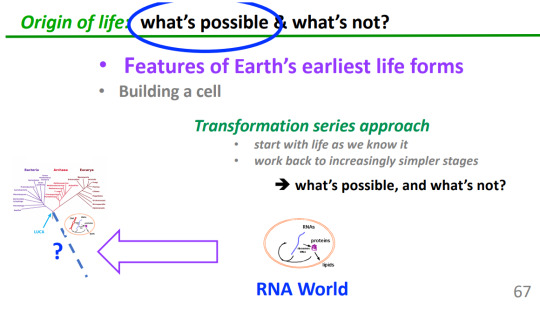
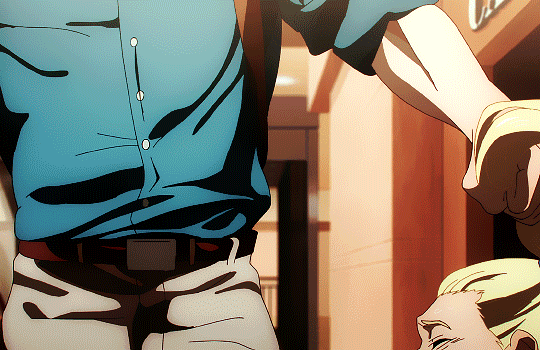
Natural selection began as soon as RNA began to self-catalyze
RNA molecules are different
Some RNA molecules copy themselves better than others because of their nucleotide sequences
Nucleotide sequence differences are inherited
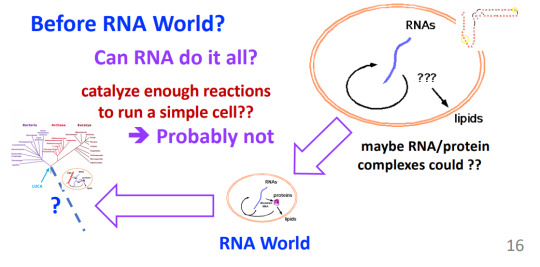
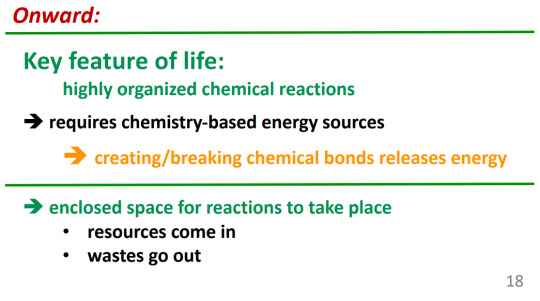
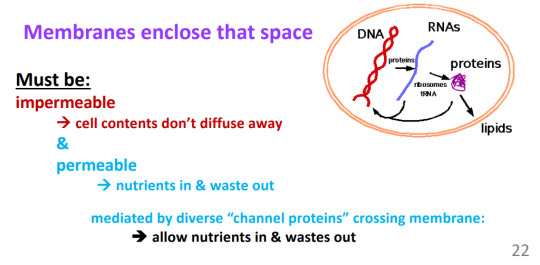
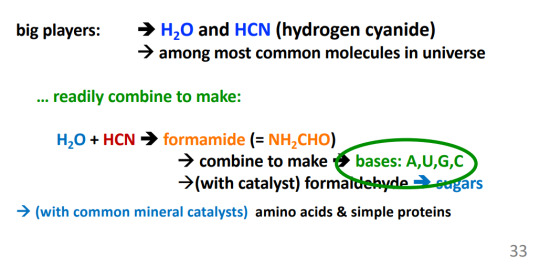
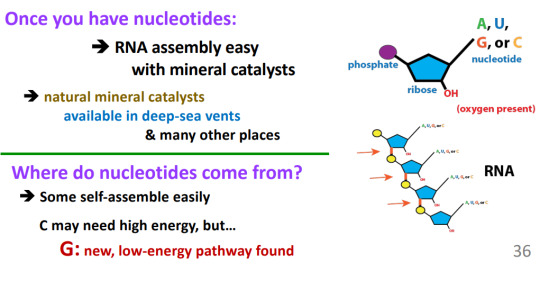

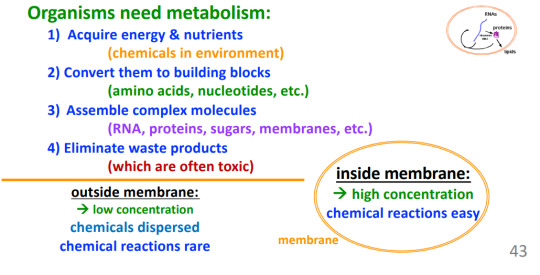

I GIVE UPPPPPPPPPPPPPPP

Evolutionary tree of the homins
Bipedalism -> walked up right
1) Sahelanthropus: 6.5 - 7 mya
Evidence: Femur structure, hip joint, foreman located under head's center of gravity
2) Ardipithecus: 5 mya
Opposite toes=climbing and walking
Monkey like
Key insights to what great ape ancestors might look like
FACT: Complex trait can revert functionally, but rarely to original morphology
Did humans evolve from chimpanzees? No.
Austrapolic afarenis
"Lucy"
Fat, human like foot
Australopithecus garnhi
2.6 mya
Earliest manufactured stone tools
Homo-habilus
Large brain size evolving
Large brain possible when high meat diet
As many as 9 species of human coexisted at the modern humans evolved (7 shown here, 2 more known from DNA)
Homonaledi
South Africa
350,000 - 200,000 years ago
Deep in South African caves
May have used fire (buried and sacrificed their dead)
and 2 hobbits
Died out around when modern humans arrived
On islands till humans got to them
They...
Independently evolved from Australopithecus
Small brains
Flat feet, so no arch
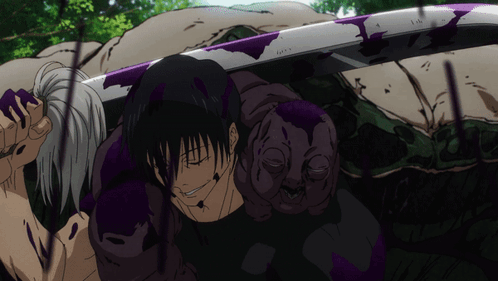
DNA-based phylogeny
Last 800,000 years
DNA extracted from bones
Neanderthals: Eastern and Western
Lived from 400,000 to 35,000 years ago
Lived in Europe and North-Central Asia
Had pale skin and red hair
Denisovan: North-Central Asia
Lived from 400,000 to 70,00 years ago
DNA reveals: alleles for darker skin
Known for a few teeth and small bones
Ancient human species interbreed.
At least 6 cases of interbreeding in early humans
One girl from Denisova cave had a Deni father and Neanderthal mother
Look at bone structure and chromosome
Modern human chromosomes carry small pieces of other species DNA
Sub-Saharan African: from mystery hominin #2
East Asian and Europeans: From Neanderthals and Denisovans
INTROGRESSION INTO MODERN HUMANS -> NOBODY IS PURE HUMAN!
East and Central Asians, and Europeans: From Neanderthals
1.5 - 3% of Neanderthals DNA in Europeans
Many deleterious: risk increase for heart disease, skin cancer, and depression
Benefits: pathogen resistance, and more expected
What can mitochondria and Y chromosomes tell us?
Mitochondria:
Have their own DNA = mDNA
Inherited from mother via egg
Y chromosomes:
Inherited via father only
MODERN HUMAN MDNA
High diversity of human mDNA variants:
Color: Major groups of genotype, each with their own minor variants
Where did first ancestors of all modern humans live?
Africa
"Mitochondrial Eve"
Woman who carried common ancestor of all humans' mtDNA
2 daughters -> one mutation
208,000 and 60,000 years ago (2014 estimate)
Y-Chromosome Adam
Man who carried common ancestor of all men's y chromosomes
-230,00 and 60,000 years ago
Difference not statistically different (2015 estimate)
Difference not statistically different
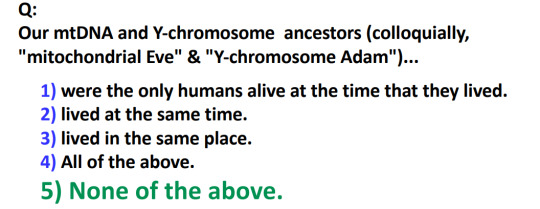
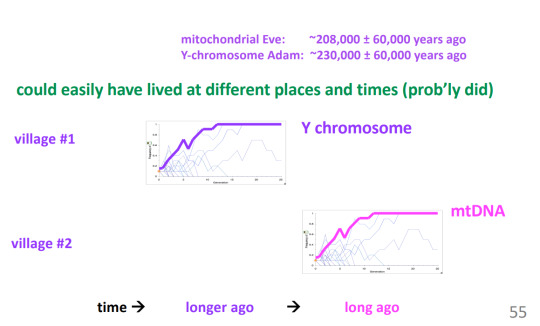
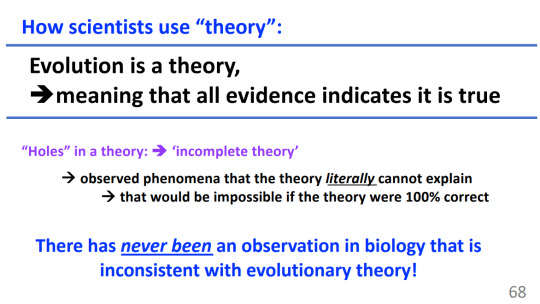
0 notes
Text
Rare fossil of bone-crushing crocodile cousin found in Brazil
The prehistoric reptile likely played a surprising but vital role in its Triassic ecosystem.

Rodrigo Müller was working a block of rock and dirt at the base of Agudo Hill, an hour from Porto Alegre, when he first saw an unusual set of osteoderms, bony deposits that form plates on the skin of a reptile or amphibian.
“It was a surprise, because we had never seen anything like this in Brazil before,” Müller, a palaeontologist at the Federal University of Santa Maria, says of what was otherwise an ordinary visit to the Janner dig site, once home to some of the earliest dinosaurs to roam Earth.
As he continued his delicate work, he brushed dirt from an intact cranium and several other fossilised bones. Together, the collection formed a well-preserved and almost complete skeleton of a rare Ornithosuchidae reptile, a family considered cousins to today’s crocodiles and alligators that had been previously recorded only in Argentina and Scotland.
Dated to 230 million years ago, Dynamosuchus collisensis—newly named for its powerful bite and the location of the find—was described January 31 in the journal Acta Palaeontologica Polonica by a team that includes Müller’s colleagues at Argentina’s Museo de La Plata and Virginia Tech in the United States. Only three other species of Ornithosuchid have been discovered in the world, the last of which was found in Argentina and described 50 years ago.
While its bite could crush bones and its blade-like teeth tore through meat, Müller and company believe Dynamosuchus collisensis was a slow scavenger, or necrophagous, similar to the vultures and hyenas of today. It fed mostly off animal carcasses and easy-to-catch prey, meaning it filled a crucial part of the food chain that palaeontologists hadn’t known existed in this region of Brazil until now.
“It helps us understand better how that ecosystem worked,” Müller says.
Continue reading.
604 notes
·
View notes
Text
Megachirella
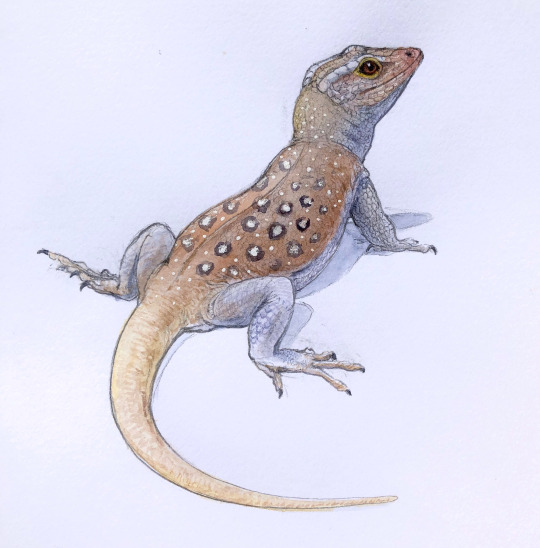
By Ripley Cook
Etymology: Small thing with big hands
First Described By: Renesto and Posenato, 2003
Classification: Biota, Archaea, Proteoarchaeota, Asgardarchaeota, Eukaryota, Neokaryota, Scotokaryota, Opimoda, Podiata, Amorphea, Obazoa, Opisthokonta, Holozoa, Filozoa, Choanozoa, Animalia, Eumetazoa, Parahoxozoa, Bilateria, Nephrozoa, Deuterostomia, Chordata, Olfactores, Vertebrata, Craniata, Gnathostomata, Eugnathostomata, Osteichthyes, Sarcopterygii, Rhipidistia, Tetrapodomorpha, Eotetrapodiformes, Elpistostegalia, Stegocephalia, Tetrapoda, Reptiliomorpha, Amniota, Sauropsida, Eureptilia, Romeriida, Disapsida, Neodiapsida, Sauria, Lepidosauromorpha, Lepidosauriformes, Lepidosauria, Squamata
Status: Extinct
Time and Place: 242 million years ago, in the Anisian of the Middle Triassic.
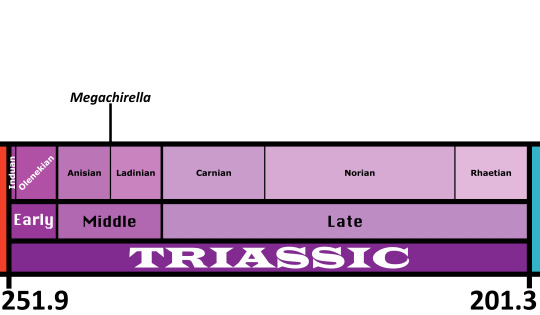
Megachirella is known from the Italian Alps.

Physical Description: Megachirella would have looked very… lizardy. Which makes sense, seeing as it is the earliest known lizard. It had a relatively large skull with large eyes and tiny pointy teeth (which would have been barely noticeable, like the teeth of geckos). Its body was long and had short, sprawling limbs. The front limbs had large hands (which give it its name). Each finger was short and bore decently-sized claws. It probably also had a long tail, but we don’t know for sure because only the front half of the holotype specimen was recovered. It’s estimated at being no greater than 20 cm long.
Diet: Megachirella was probably insectivorous, going off of its small, numerous teeth.
Behavior: Megachirella may have spent some of its time in trees, based on the large hands and stout fingers that would have given it a powerful grip. However it doesn’t show the mass of adaptations for living in trees that some lizards like chameleons do; in this regard, it was probably more comparable to anolid lizards.
Ecosystem: Megachirella was found in a unit of rock in the Dolomites in Italy. This deposit has yielded 17 kinds of fossil plants, as well as more sparse remains of bivalves, gastropods, ammonites, and fish, Based on this, and the fact that the rock formation has alternating units of terrestrial and marine fauna, Megachirella seems to have lived along a well-forested coastline. This area was likely hit regularly by storms that would have caused rapid burial.
Other: Megachirella has been surprisingly well-studied. The fossil is only about half of the animal, but the fossil block has been described three times, one of which involved micro-CT scanning. It was originally described as being outside the tuatara-squamate clade, but the micro-CT scanning revealed many anatomical details that it has in common with squamates. Thus, it’s the oldest known lizard!
~ By Henry Thomas
Sources under the cut
Renesto, S., Bernardi, M. 2013. Redescription and phylogenetic relationships of Megachirella wachtleri Renesto et Posenato, 2003 (Reptilia, Diapsdia). Palaontologische Zeitschrit 88(2): 197-210.
Renesto, S., Posenato. R. 2003. A new lepidosauromorph reptile from the Middle Triassic of the Dolomites (Northern Italy). Rivista Italiana di aPaeontologia e Stratigrafia 109(3): 463-474.
Simoes, T.R., Caldwell, M.W., Talanda, M., Bernardi, M., Palci, A., Vernygora, O., Bernardini, F., Mancini, L., Nydam, R.L. 2018. The origin of squamates revealed by a Middle Triassic lizard from the Italian Alps. Nature 557: 706-709.
Wachtler, M. 2018. Megachirella wachtleri - The history of discovery. In: Archosauria from the Dolomites, pp. 41-46.
#megachirella#squamate#lizard#triassic#triassic madness#triassic march madness#prehistoric life#paleontology
159 notes
·
View notes
Text
Cephalopod Fossils from Lyme Regis, England
My position as a Research Volunteer in the Section of Invertebrate Paleontology (IP) allows me to delve into stories about the collection that I find interesting. One of my research assignments is to investigate the fossils from Lyme Regis, England. The Lyme Regis fossils are part of the 130,000 specimens purchased by Andrew Carnegie from the Baron de Bayet of Belgium in 1903. Some of the Bayet fossils are incorporated into the museum’s Dinosaurs in Their Time (DITT) in the Triassic, Jurassic, Cretaceous, and a special Lyme Regis case that showcases 13 invertebrate and vertebrate fossils.
The village of Lyme Regis is situated on the Dorset Coast, and as such, receives some of the worst weather associated with the English Channel. The Lyme Regis cliffs and beaches have been a fossil hunting graveyard for two hundred years, first made famous by resident Mary Anning (1799 – 1847). When she was just twelve years old she found a large skeleton of a marine reptile known as an Ichthyosaur (literally “fish lizard”). Ichthyosaurs were predators that fed on Jurassic fishes and ammonites. It’s easy to see how she developed a love of fossils after discovering such a magnificent creature as a child. For years, she amassed collections of plesiosaurs, pterosaurs, fish skeletons, and other marine fossils and sold them for a living to paleontologists worldwide. In DITT, there are two examples of Ichthyosaur specimens, a skull (CM 877) and a three-foot-long skeleton (CM 23822). Unfortunately, Mary Anning was not recognized during her life for her accomplishments, probably because she was not a trained paleontologist and she was female. After her death, the collections became widely known to the scientific community, bringing about a better understanding of the paleontology of the Dorset coast.
A fascinating piece of trivia about Lyme Regis is the filming of the 1980 movie, The French Lieutenant’s Women, which depicts the lead male actor, Jeremy Irons, using a simple rock hammer to extract a fossil ammonite from the cliff. If only it was that easy to collect from the 300-meter sheer cliff. My supervisor, Albert Kollar, collected fossils along the Lyme Regis beach in 1999. He opined “most fossils are eroded naturally because of the storm waves coming in from the English Channel that eat away at the rock each year, collapsing to the beach in broken blocks that eventually expose the fossils over time.”
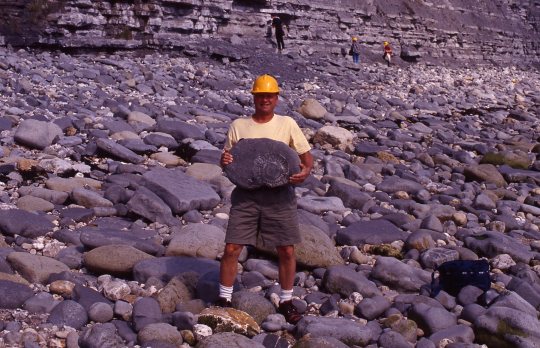
My project was to research the Lyme Regis mollusks i.e., ammonites, nautiloids, and belemnites, update their identification, and review the climate aspects of the Jurassic sea that once covered this part of Europe approximately 199 to 190 million years ago. Paleontologists use marine fossils to interpret past paleoclimates and the paleoenvironments in which the animals once lived. The Jurassic is commonly considered as an interval of sustained warmth without any well-documented glacial deposits at the polar regions. The Lyme Regis fossils are preserved in very discrete layers of limestone strata often named “Lias” by European geologists. The terminology used today is early Jurassic Sinemurian Stage. The fossil mollusks are singular specimen’s that measure approximately 1 inch to 8 inches in diameter. The Carnegie of Natural History collection contains 16 invertebrate specimens from the genera Acanthoteuthis, Asteroceras, Eoderoceras, Liparoceras, Lytoceras, Microderoceras, Nautilus, Radstockiceras, and Xipheroceras.
All Bayet fossils were recorded in the Carnegie Museum Catalog of Fossils. The Cephalopod Catalog contains ammonite, nautiloid, and belemnoid fossils assigned by Bayet and includes details such as collection localities and stratigraphic horizon. Some Lyme Regis specimens are recognized by having two letters “BK” and a painted number, as seen on CM 40666. In 1975, a Swiss paleontologist, Dr. Felix Wiedenmayer, was on a research sabbatical to study fossil sponges at the Carnegie Museum, as well as an expert on Mesozoic ammonites from Europe. He reviewed many Mesozoic ammonites providing updated identification to genus and species, and stratigraphic horizon data, including some of the Lyme Regis ammonite fossils.
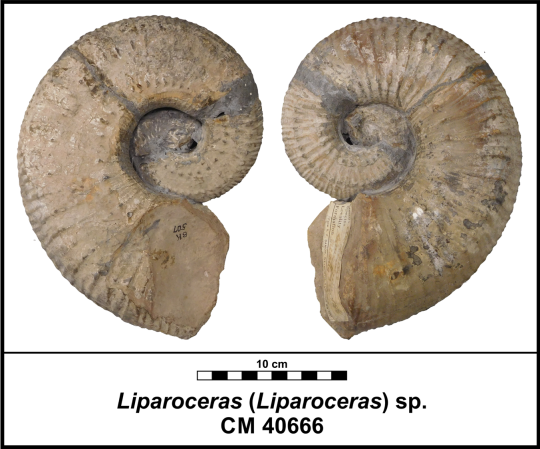
To complete the project, I created a virtual geology, paleontology, and exhibit folder in PowerPoint. This includes photographs of the specimens, a geologic map of Lyme Regis and the Dorset Coast, a Paleogeographic map, the distribution of genus and species in the collection, and references. The photographs in this study were taken by IP Research Associate/volunteer John Harper.
I have had a great experience at the Carnegie Museum of Natural History gaining knowledge about these fossil collections, stratigraphy, and geologic time. Now, I look forward to graduate school in part to study microfossils that lived in the seas during a climate “event” around 56 million years ago during the Paleogene Epoch. This event is called the “Paleocene-Eocene Thermal Maximum” (PETM), and is so named because it demarcates the boundary between these two epochs of geologic time. It has been a pleasure looking at these exceptional cephalopods at the Carnegie Museum, and I look forward to any more potential collaborations in the future.
William Vincett is a research volunteer in the Section of Invertebrate Paleontology and a graduate student at the University of Delaware. Museum employees and volunteers are encouraged to blog about their unique experiences and knowledge gained from working at the museum.
#Carnegie Museum of Natural History#Invertebrate Paleontology#Lyme Regis#Bayet fossils#Carnegie Museum Catalog of Fossils#Fossil#Fossils
132 notes
·
View notes
Text
So back in December I posted a list of dates for a Winter talking meme, promising to post at least 100 words about whatever topic someone requested during a given 3-day period (instead of the usual specific day), because I knew I couldn't be relied upon to actually meet a deadline as targeted as a single day. Apparently I can't meet deadlines of three-day blocks, either? So here, just over a month late, is sami from dreamwidth’s request/prompt: What things you find most comforting (that you're comfortable talking about). This is an easy one. For physical comfort, there's my microwavable heat packs, my faux fur weighted blanket (the actual-fur blanket lives carefully packed away inside a zipped suitcase, only to be brought out on nights when the temperature drops into the 20s/below -2 Centigrade, because the Stevelet's favorite comforting thing is apparently to rip entire mouthfuls of reindeer fur loose from it and scatter them all over the bed), and my vast collection of lavender-scented perfume oils (how many lavender-scented BPAL and NAVA perfumes does one person need? The answer, of course, at least when a new scent collection drops, is always "at least one more."). For emotional comfort, or even just for when I've had a long day at work and want something emotionally soothing to watch that isn't going to require me to watch subtitles (which I normally prefer to have on everything, including movies and tv shows in English, but which I prefer not to have to focus on when I have a migraine), I like documentaries. Specifically, I like paleontology documentaries about prehistoric life, especially re-watching them. I love David Attenborough nature documentaries and find those soothing, too, but they always include something anxiety-inducing about habitat loss or poaching or climate change. When I'm watching something about the Devonian or the Permian or the Ogliocene I don't have to feel existential anxiety or be sad that a given species is almost certainly going to become extinct in the wild during my lifetime because it all happened millions of years ago and the end-Permian extinction event/Dinosaur meteor/freezing of the poles during the Pliocene wasn't humans' fault. Anything that pre-dates the Holocene is a closed canon, and a closed canon means not having to worry that something awful will happen to your favorite character in the next installment. Because I know someone out there will want recs: Walking with Monsters - 2005 BBC documentary made as a follow-up to the famous Walking With Dinosaurs one. This one covers Paleozoic life, from the Cambrian to the Permian/early Triassic. The best part is either the Silurian/Ordovician sea scorpions, the Permian synapsids, or the Carboniferous swamps section where a giant spider gets smote down by the wrath of God as all arachnids ought to be barbecued by lightning. Your Inner Fish (http://www.pbs.org/your-inner-fish/home/) - A three-part documentary based on Neil Shubin's book about humanity's deep evolutionary roots. The first part, "Your Inner Fish," looks at the transition from lobe-finned fishes to tetrapods/amphibian-like creatures during the Devonian. The second, "Your Inner Reptile," looks at the origins of mammals from the Permian through the Jurassic, and the third, "Your Inner Monkey," is about the origins of primates from the Eocene onwards. Australia's First Four Billion Years (https://www.pbs.org/wgbh/nova/series/australia-first-4-billion-years/) - Another three-part series, this time about the formation of Australia and its geographical and paleontological history. Since Australia contains some of the oldest rocks on earth, this series literally goes all the way back to the creation of the earth and the origin of life. It covers everything from a look at some of the oldest fossils in the world (bacterial mats and really weird-looking worm things), to the evolution of plants, to where Australia's groundwater came from, to why the Australian outback is all red dirt like Mars.
#closed-canon is best canon#Australia is older than dirt#older than any of the other continents' dirt anyway#evolutionary history is my oldest fandom
3 notes
·
View notes
Photo

New Proto-Dinosaur Found in Colorado
A lanky reptile found in the Centennial State is a close cousin of early dinosaurs
What’s almost a dinosaur, but not quite? The answer, as paleontologists have come to understand, is “a silesaur!”, a non-dinosaurian dinosauromorph. I know that’s a bit of a mouthful. Let’s unpack that.
Silesaurs aren’t exactly famous in fossil circles yet. The iconic member of the group, Silesaurus, was named in 2003 and the group’s identity wasn’t fully recognized until 2010. As old as they are, dating back through the Middle and Late parts of the Triassic, they’re pretty new on the Mesozoic block. And they’re important to our understanding of how dinosaurs evolved. Silesaurs are not technically dinosaurs, but they’re close relatives that belong to the larger group which dinosaurs are nested in.
That’s why they’re called non-dinosaurian dinosauromorphs – in short, protodinos. And paleontologists Jeffrey Martz and Bryan Small have just named a new one from Colorado.
The new silesaur, known from parts of the skull and body, is named Kwanasaurus williamparkeri and lived more than 207 million years ago. Its name is a combination of Ute and Greek meaning “eagle lizard,” while the species name honors influential Triassic paleontologist Bill Parker. It’s the fourth silesaur known from North America, and the latest of 11 described so far...
Read more: https://blogs.scientificamerican.com/laelaps/new-proto-dinosaur-found-in-colorado/
13 notes
·
View notes
Photo
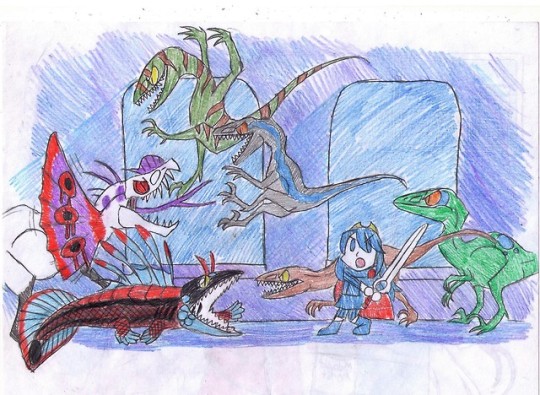
Jurassic Emblem-Chapter 5
Kyaaah~!! The first boss fight in this fanfiction! Aren’t you guys excited! For a particularly special treat, listen to this while reading this chapter! (>w <)
“What are you two dragonskin doing here at this hour?” The velociraptor named Lucina questioned. She and her bretheren weren’t pleased to see these intruders stepping out the cryogenics lab.
Teba sighed. “If you would like us to spill the honest cake with tea, we are employed by Dr.Henry-”
Warbler grabbed the wine bottle from her partner’s garments and presented it to the raptors. “We’re taking these babies with us! Pull anything outta your asses and I’ll happily dice you all up! Kehahahahaha!”
Suddenly a wave of epiphany flooded over the Exalted princess.”When I consoled that poor, unfortunate mother whose child was eaten,”Lucina said. “Was a purple-white saurian responsible for the incident?”
“So what if I was? You and me are exactly alike! After all, we both prevented great catastrophes. You killed the wo-man-man who jizzed all over your daddy’s carcass while I saved that baby’s descendant from being hung on Valm’s gates-”
“Don’t you DARE compare me to the likes of you!” Lucina was about to dive-bomb Warbler, but her amber-eyed self caught her in her arms. “Stop Future Witness. We can eviscerate these bitches AFTER we find out more about them.”
“I agree with Blue,” the green-blue raptor named Delta said. “We may be dinosaurs, but we mustn’t be so hasty.”
“I don’t know who you two bitches are, but you smell like a certain goddamn geneticist,” the brown raptor Echo growled.
“Hey Red-Blue Fish! Can I piggyback on you?” The young jungle-green dromaeosaur Charlie chippered. Despite the tense situation she was very enthusiastic.
Teba took back the wine bottle from Warbler’s hands and placed it back in his garments. “t’would appear that no matter what era they’re in, children are very rash and impulsive.” He unfastened the pair of katana blades hung on his waist and striked them at the raptors.
Well, almost anyway. Lucina blocked the katanas with her Falchion sword with a klink! “I guess words just won’t cut it,” she muttered. “Whoever said that the pen is mightier than the sword is a giant, obese, liar.”
“Good, because I’m starting to feel a tad-little blood-thirsty,” Blue said. She and her sisters held up aqua-blue pebbles with ouroboro-fossils on them and they immediately morphed into their six-foot tall lizard forms.
Likewise, Warbler took out a similar stone, and she too transformed. But she didn’t turn into a Velociraptor nublarensis, oh no. Rather, Warbler morphed into an eight-foot all dinosaur, white and purple. She had purple V-shaped crests on her beak-like snout and similarly hued quills and spots on her tail and neck.
And indeed, Warbler puffed out her neck revealing an expansive frill ornated with purple and blood-warning patterns. Patterns that Lucina knew all two well since she was sixty days old.
“You....GGGGGRRRRRIIIIIIIIIIIMMMMMMAAA~!!!!” The blue raptor(not Sole-Survivor, mind you.) had totally lost her head. “I’m going to send you back to the Permo-Triassic Extinction Event 3.5 billion times if necessary!”
KLINK! Teba had blocked Lucina’s sword attacks again but this time he wasn’t holding his weapons in his hands. They were spinning in a shield-like circle, held in place by special electro-magnetic fields produced by the samurai.
“Listen,” Teba calmly reprimanded Lucina. “I don’t particularly like hurting children; in fact, I am one to protect children. And out of all these raptors I’m facing off against, you are the most youngest and the most rash.”
“Yeah, Luci-Loosey,” Warbler taunted in a harsh sing-song tone. “You got to loose up! Kehahah! Get it, loose up? Because no matter how many times you try, your stupid family always die! KAHAHAHAHAAH!!”
More sword-on sword fighting. The other raptors were watching closely, but they would’t dare get any closer to Teba’s shīrudo-gatana lest they got blended up up like a fruit smoothie.
“This is for Chrom and Emmeryn, bastard!” Lucina eventually smashed through Teba’s defense-move and was about to chop him up into sashimi and something wet and hot smacked against her eyes, and before she knew it, an immense burning pain had coursed through her central nervous system and Lucina collasped on the floor, Falchion and all, wriggling in screaming agony from what feels like searing knives slicing her brain and eyes.
“KEHAHAHAAHAHAHAH~!! What’s wrong, Future Witness? I thought you said you were going to kill me!?” The raptors wasted no time rushing to their comrade’s aide. "Oh yes, of course! I’m a dilophosaur, and dilos puke out a painful neurotoxin that blinds the eye and numbs the muscle! Don’t worry, I’ll end you and your bloodline’s pain!”
Dismayed that his swords were shattered by the couch-shredder that was Luci’s Falchion, Teba took out an aqua-blue stone from his kimono. Shaking and holding the stone, he had morphed into what appeared to be a deep-red salamander the size of an alligator, the snout black with an iridescent-blue chin. His dorsal fin was not unlike that of a lionfish, and the limbs were not-quite legs but not traditional fins either(think of the limbs of a Queensland Lungfish). They were a marvelous light-blue color and so was his caudal fin, embellished even further with red outlines and an eye-spot. As lavish his form was, Teba reluctantly transformed into this state due to the fact that though he can breathe atmospheric air, terrestrial locomotion was a massive pain in the ass, slithering deliberately and dragging the belly with stubby limbs that didn’t had fingers.
At least I’m quipped with sharp piercing spines and predatory teeth, Teba thought to himself as the reptilian birds of prey leaped on to him and Warber. Echo just narrowly missed the dorsal spines and bit down unto the amphibian’s flanks, which as starting to tear, albeit with great tediousness from the ganoid scales enveloping Teba’s body. Delta had landed to the opposite side and attempted to rip off Teba’s right forelimb. The salamnder tried to turn his head to bite unto Delta, but the light-green raptor quickly jabbed her claws into the tetrapod’s gills, a waterfall of dark blood pouring out like some dead Kool-Aid Man. Teba had gagged and sputtered and soon, he passed out.
********
Blue and Charlie faced Warbler. The purple-white dilophosaur had tried spitting her venom at the two raptors, but they were too quick and the dark goo simply flew straight out the window(and unto Byleth’s eyes below) or smacked right into a portrait of the late King Gustav. Blue landed just beneath Warbler’s neck, grabbed her frill, and started to pull. Charlie landed on the dilo’s back, and sank her sickle-talons and teeth into her flesh, the entire sensation of ripping flesh too much for Warbler to bear.
And things just keep getting better. Noticing the Midnight Merlot bottle containing the embryos on its side next to Teba’s unconscious body, Delta picked the bottle up and thrust it into Warbler’s mouth.
“-!AHP-AH uh ooi-!?” Warbler gibbered. And with Charlie noticing the grand opportunity-
KLINSHHH~!!!
She closed Warbler’s beak onto the glass, the bottle shattering apart alongside the embryos and coolant gas seeped out in a thick, ghostly smoke as Warbler’s beak started to frostbite.
“B-Bitches...” The dilophosaur glared at the raptors now menacingly, “bitches like you deserve to have their stomachs pumped full of Duma’s semen! You just murdered 12 babies of 12 Heroes!”
“That’s the worse joke I’ve ever heard in my life,” Blue said, tightly pulling at Warbler’s frill now. “Isn’t that coming from a someone who just ate a newborn like BBQ bacon-burger dipped in wine?”
With that line, there was loud SHHRRRIIIP! as the non-Lucina raptor tore off Warbler’s frill and thick gushes of dark crimson had flowed out, Warbler collapsed on the ground, and much like her fell comrade Teba, sputtered and gagged before spewing out a sweet-smelling pool of digested meat, cartilage, and oozy organs from her stomach.
Blue walked over to a heavily panting Lucina. “C’mon, Future Witness, let’s patch you up and flush that disgustingly foul-venom from your eyes.” She picked her up bridal-style and that’s when she and her sisters noticed that they were surrounded by Heroes who were groggy and stirred from the boss fight earlier.
Horn Skuld and Chrom were one of them.
Charlie tried to ease the situation.” Umm, what’s up, fellow mammals? Any of you fellows want some Reese’s Banana sliders?”
#jurassic emblem#fire emblem heroes#jurassic world#blucina#raptor squad#blue#delta#echo#charlie#teba#warbler#dilophosaurus#salamander#fanfiction#notice:contains awesome content and outstanding vocabularly#SFW#lucina
7 notes
·
View notes
Photo
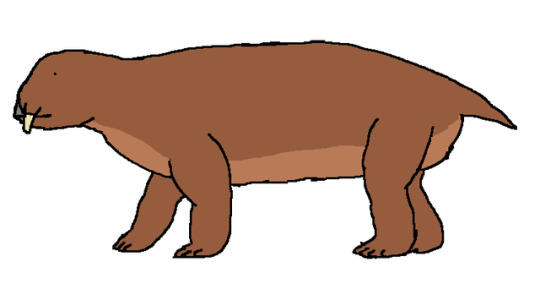
Lystrosaurus – Late Permian-Early Triassic (255-250 Ma)
I’m back! I was sort of at a loss of what animal to talk about when I came back from my hiatus in earnest, but during the spotty downtime I had last week, I read When Life Nearly Died by Michael Benton, and that pointed me in the direction of this chubby little gentleman, whose name is Lystrosaurus. Lystrosaurus is one of the (very very VERY) few animals to survive the Permian-Triassic Extinction event, and we’re gonna take a look at why exactly that is.
Lystrosaurus is yet another synapsid, or proto-mammal. This guy was a member of the second wave of Paleozoic synapsid radiation, a member of the order Therapsida, which were characterized by being more similar to true mammals than the first group, the pelycosaurs. Edaphosaurus and Cotylorhynchus were both pelycosaurs, and were a bit more basal. Lystrosaurus shows a few of those therapsid traits, most importantly the shape of its skull and its semi-sprawling gait. On the less mammalian side of things, it probably had a beak made of horn for shearing vegetation. It had the characteristic deep body cavity for digesting all the tough plants it ate. It also had no teeth except for a pair of enlarged canines, which it probably used to uproot its food. The most common species was about the size of a schnauzer, although a much rarer species grew a bit larger. All-in-all, it wasn’t really anything special compared to its contemporaries.
Despite being tiny and rather typical of an animal from its time period, Lystrosaurus is an important animal for a few reasons. Even though plate tectonics are common knowledge and accepted as fact now, it took a long time for it to gain any serious traction. Alfred Wegener was pretty much laughed off when he first suggested the continents move in 1915. As a part of this theory, Wegener also suggested the continents had been united at some point into a supercontinent he called Pangea. His contemporaries heard the idea and basically said, “Okay but continents don’t move, obviously. Have you ever seen a continent move?” To their credit, the evidence at the time was, more or less, Africa and South America fitting together and other such things. Which, yeah, we know were right now, but back then it wasn’t so obvious. The next several decades were a slow march to acceptance of the theory of continental drift. Lystrosaurus figures into this by having been found in Asia, Africa, Europe, and even Antarctica by the 70s. At that point, even the most hardened skeptics shrugged and said, “Okay, yeah, fine.”
Lystrosaurus is known from an absolutely stupid number of fossils. The Great Karoo Basin in South Africa has an unreasonable amount of Lystrosaurus remains. They make up 95% of the animals found there, and they’re so abundant that paleontologists pull their hair out trying to find literally anything else. The most studied parts of the Karoo Basin span the late Permian and Early Triassic, and once you get into the Triassic rocks, it’s pretty much Lystrosaurus all the way down. Why is that?
Because nothing else survived the Permian Extinction.
There are five major mass extinctions in the Phanerozoic Eon. I’ve talked about two of them on this blog so far. I talked about the End-Ordovician extinction event when I covered Endoceras, and the End-Triassic extinction with Effigia. And I’m here to say that those events were fucking peanuts compared to this one. This was the single greatest crisis for life on earth, to the point that it’s often called The Great Dying. This was the destruction of about 90% of all species on earth at the time, and for a while we weren’t even really sure what was causing everything to fucking die. The most accepted theory nowadays is the series of eruptions of the Siberian Traps at the end of the Permian period. Basically, most of what we now call Siberia turned into a volcanic wasteland and exploded every so often, anywhere from every few thousand years to every few months.
These were more than volcanic eruptions. This was fire and brimstone, magma punching massive holes in the earth and launching toxic gasses and solid ejecta into the atmosphere. Anything remotely nearby suffocated or was struck by fiery debris. This wasn’t the most severe killing agent, though, not at all. The Great Dying earned its name because of the secondary effects. The gasses spewing into the atmosphere blocked out the sun and caused flash-freezing, followed by periods of global warming. Glaciers melted and released even more toxic gasses trapped beneath them, poisoning the seas and killing anything unadapted to anoxic conditions. It’s pretty telling that the majority of the marine animals that survived into the early Triassic were clearly adapted to life without plentiful oxygen. Plants on land were suffocated or frozen to death, and the ecosystems collapsed from there. The earth was a frigid, barren landscape. The seas and land alike would be littered with corpses of animals and plants. The earth has mechanisms to balance these influxes of toxic chemicals, but the problem was that by the time those mechanisms could get started, Siberia would erupt again and start the process all over again. If you were to walk around Pangea during the peak of this crisis, 1) It would fucking suck, and 2) You’d probably come across a very distressed Lystrosaurus before finding any other animal.
Why in the goddamn hell did Lystrosaurus survive when so many other animals didn’t? It’s a complicated question, because it’s important to ask another question first: What animals are vulnerable to extinction events? There are a couple of broad categories of vulnerable animals during mass extinctions:
Large animals: Large animals are especially vulnerable because they need more energy to keep themselves going, and almost always have small populations and slow reproductive cycles. This goes for predator and prey alike. When plants start dying, herbivores can’t feed themselves, and the large carnivores that prey on them don’t have anything substantial to eat. This is the reason animals like elephants and rhinos have such a hard time bouncing back after we nearly hunted them all to extinction.
Specialized animals: Specialized animals are almost always doomed in big extinctions. If an animal is really, really good at functioning in a specific environment, it’s going to bite it as soon as that environment gets thrown off-kilter. Animals that specialize in eating a specific plant or hunting in a specific environment don’t usually survive when everything gets hit.
So, the animals who are most likely to survive a mass extinction are the small generalists, who can thrive pretty much anywhere. Lystrosaurus fits this description, but forget all of that for the purpose of this conversation, because the Great Dying decimated life of all sorts. Generalists were more or less just as likely to die off as the specialized animals or the big guys. So, we ask again, why did Lystrosaurus survive when so many other animals, even those similar to it, didn’t?
There isn’t really an answer to that question. Scientists have puzzled over the remains of Lystrosaurus and asked over and over again, “Why this little bastard?” and they’ve come up with nothing substantial. It was luck that a little beaked herbivore was one of the lucky few. There’s no adaptation that made it particularly hardy in the face of total metazoan annihilation. There’s no reason it survived the act break between the Paleozoic and Mesozoic eras. It just did because it happened to survive. This isn’t a parable of survival as much as it is one of dumb luck. One of the characteristics of a mass extinction is that it is essentially indiscriminate. Lystrosaurus had every reason to perish like its relatives, but it just didn’t. Being the generalist that it was, it wasn’t hard for it to recover when the Siberian Traps died down and life finally gained a foothold. It multiplied at an absurd rate and covered the earth. The early Triassic was unequivocally dominated by waddling herds of Lystrosaurus. An argument could be made that it’s the single most successful genus of synapsid in history, although Mus and Rattus would probably argue that point.
Whew. That was a lot. I hope it serves as a fitting return! Lystrosaurus was an animal I’d been meaning to cover for a long time, but only now felt like I was able to do it any justice. There’s so much to say about Lystrosaurus, to the point I could write a book about it. The cover would probably look something like this:
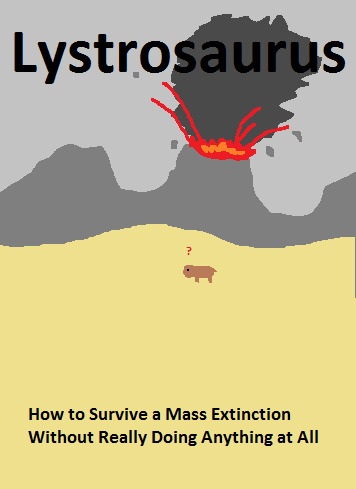
I’ll see you next time!
******************************************************************************
Buy me a Coffee, if you’d like!
#lystrosaurus#therapsids#synapsids#proto-mammals#permian#triassic#paleozoic#palaeozoic#mesozoic#paleoart#palaeoart#paleoblr#palaeoblr#paleontology#palaeontology#prehistoric
129 notes
·
View notes
Photo

RARE Fossil Coprolite with Reptile/Fish Fragments – Aust Cliff, Bristol – Upper Triassic – UK Authentic Specimen
This listing is for a genuine fossil coprolite (prehistoric faeces) embedded in a fossil-rich block from the famous Fish, Reptile and Coprolite Bed at Aust Cliff, Bristol, part of the renowned Westbury Formation, Penarth Group, dated to the Upper Triassic (~208–201 million years ago).
Your specimen was discovered by our own team members, Alister and Alison, on 07 April 2025, and has been carefully cleaned, prepped, and treated by Alison to preserve its natural features. It includes both the fossilised coprolite and embedded fragments of other vertebrate fossils (likely fish or reptile bone), making it an exciting specimen for collectors and educators alike.
Geological Details:
Formation: Westbury Formation
Group: Penarth Group
Locality: Aust Cliff, Bristol, UK
Stratigraphy: Upper Triassic
Depositional Environment: Shallow marine to marginal marine lagoonal setting, periodically influenced by storm activity and vertebrate activity.
Fossil Type and Features:
Fossil Type: Coprolite (fossilised faeces)
Possible Source Organism: Ceratodus (lungfish), predatory fish, or small marine reptiles.
Morphology Features: Coprolites are typically spiral or cylindrical with visible inclusions of bone or scales from prey items.
Preservation: 3D preservation in a sedimentary matrix; some specimens also contain phosphate-rich inclusions.
Significance:
Educational Value: A unique glimpse into the dietary habits of Triassic vertebrates.
Collectability: High – especially when combined with other fossil inclusions.
Rarity: Blocks from this bed are well-known but finite and increasingly rare due to erosion and collecting pressure.
All of our Fossils are 100% Genuine Specimens & come with a Certificate of Authenticity.
Scale cube = 1cm. Please refer to the photo for full sizing. The fossil in the image is the exact specimen you will receive – hand-selected for quality and interest.
Add a remarkable piece of prehistoric life to your collection today!
#Fossil Coprolite#Aust Cliff Fossil#Upper Triassic Coprolite#Fish Fossil Block#Reptile Fossil UK#Westbury Formation#Penarth Group Fossil#Genuine Triassic Coprolite#UK Fossil with Certificate#Triassic Fossil Bristol#Fossil Faeces#Prehistoric Dung Fossil#Fossil Block with Bones#Authentic UK Fossils
0 notes
Text
Dinosaur research
Dinosaurs lived in the Mesozoic Era which scientists divided into 3 different periods of time the Triassic, Jurassic and Cretaceous. during this era the land slowly split into smaller pieces from 1 big piece of land. This was about 252 to 66 million years ago.
The Triassic period which was about 252 to 201 million years ago. All the continents where part of a single continent called Pangaea. there were not many differences between different types of plants and animals. The climate was also hot and dry. and it was was covered with large desserts, there was also no polar ice caps.

in this period dinosaurs first evolved and since reptiles (dinosaurs) prefer to be in hot climates they flourished because of their less porous skin than mammals skin so the lose less water in the heat. Towards the end of the Triassic period, a couple of earth quakes and volcanic eruptions made Pangaea to slowly begin to break into two. This event made the North Atlantic Ocean.
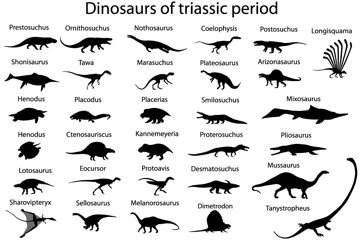
The Jurassic period which was about 201 to 145 million years ago. There was a mass extinction at the end of the Triassic period, the reason is still being debated today. A lot of large animals went extinct, except for the dinosaurs which allowed them to evolve into a lot of different types of forms and increase in numbers.

In this period Pangaea split into two, creating Laurasia in the north and Gondwana in the south. There were some connections in the fossils between these to lands despite their separation. there regions became a lot more different as the period went on. The temperature fell a bit but it was still warmer than today because of the higher amounts of carbon dioxide in the atmosphere, There was a lot more rainfall because of the large seas appearing between Laurasia and Gondwana. Because of the rain there was a lot more vegetation for herbivore dinosaurs to eat, allowing huge plant-eating sauropods - such as Apatosaurus, Diplodocus and Brachiosaurus to evolve.
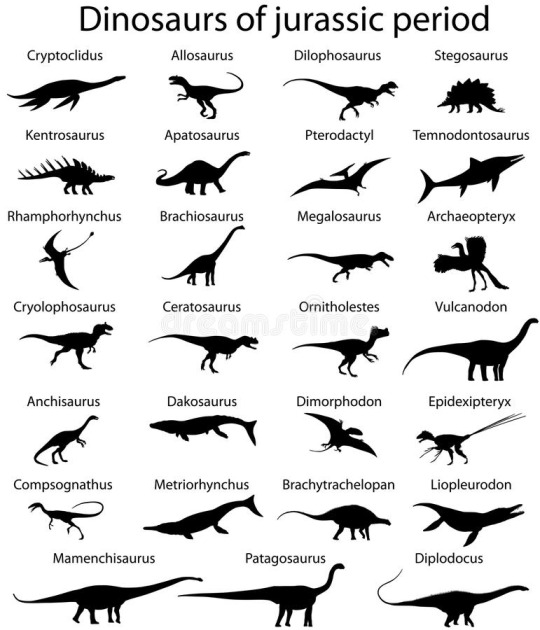
In the Cretaceous period which was about 145 to 66 million years ago. The land separated again into some of the continents we know today, although in different positions. Dinosaurs evolved alot more independently in different parts of the world becoming more diverse, the first snake also evolved in this period.

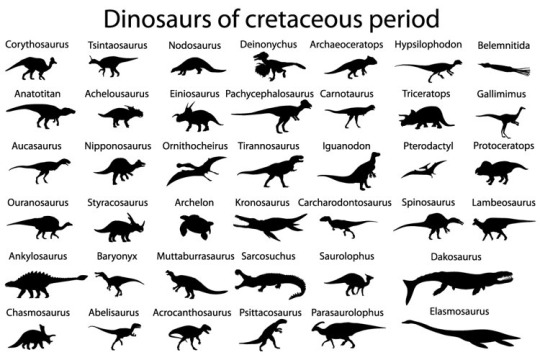
The asteroid that hit the dinosaurs, hit them about 66 million years ago. The asteroid wiped out 75% of animals on the earths wiping it clean leaving only 25% to start evolving into the animals and humans we know today. The reason the dinosaurs got wiped out by the asteroid wasn’t because the asteroid hit the land, it was because it hit the coast of Central America causing a huge shock wav. Making soot go flying into the sky and pretty much blocking out the sun, causing the dinosaurs to not get enough heat and eventually go extinct from the lack of heat.

What I got from this:
Wiping the board.
The cause of death can be the simplest things.
Lizards praise the sun.
0 notes
Photo

The Geology of the Channel Coasts
I found this geologic map while randomly searching files the other day and I was impressed at how much of the geologic history of this area, home to two of Europe’s major cities, is displayed right here.
The rocks to the far northwest are heavily faulted, folded, and metamorphosed. These rocks are the last remnant of Pangaea; the continent that is today Europe collided with the continent that is today North America, thrusting up a number of great mountain ranges, including the Variscan mountains represented by these rocks.
When those plates pulled apart, this are switched from an active range that was building mountains to a passive margin at the edge of the ocean. Basins opened, bounded by normal faults, allowing waters of the ocean to pour in. Shallow ocean sediments were deposited throughout the area from the Triassic through the Cretaceous. These sediments make up some of the famous outcrops on the shores of the English Channel, such as the high cliffs in Normandy and the fossil bearing rocks on the Jurassic coast. The thickness of these sediments varies through the Channel area because each fault-bounded basin subsided by a distinct amount.
After the Cretaceous, far away the continent of Europe collided with the continent of Africa. Far to the south, that led to the growth of mountains, but here in this area some of the old normal faults were reactivated as thrust faults. One of these faults pushed up the sedimentary rocks into a fold, seen here as the Weald-Artois anticline. At the heart of that anticline, the older Cretaceous and Jurassic rocks are thrust upwards, exposing the chalk in the White Cliffs of Dover. Away from this anticline, sediments continued accumulating in the London and Paris basins.
Finally, about 450,000 years ago, ice sheets covered areas to the north of here. Rivers continued draining into what is today the North Sea, but the thick ice sheets blocked that water from escaping to the ocean. Eventually, the water poured over the top of the hill created by the Weald-Artois anticline, creating a waterfall that carved the modern English Channel path.
-JBB
Image credit: http://bit.ly/2Dmhbsl
References: http://onlinelibrary.wiley.com/doi/10.1002/jqs.744/full http://sp.lyellcollection.org/content/162/1/25.short https://www.nature.com/articles/nature06018 https://dx.doi.org/10.1038%2Fncomms15101_ _
#Geology#english channel#chalk#white cliffs of dover#nature#travel#landscape#the earth story#science#sedimentary
98 notes
·
View notes
Text
It was an asteroid, not volcanoes, that wiped out the dinosaurs, new study finds
https://sciencespies.com/nature/it-was-an-asteroid-not-volcanoes-that-wiped-out-the-dinosaurs-new-study-finds/
It was an asteroid, not volcanoes, that wiped out the dinosaurs, new study finds

It seems almost certain that an asteroid impact wiped out the dinosaurs. But only almost. Another competing theory won’t completely go away: the extinction-by-volcano theory.
A new study from the UK piles more evidence on the asteroid side of the debate, while adding a new volcanic twist. These researchers say that volcanic activity actually helped life recover from the asteroid strike.
Most scientists support the Chicxulub impact event as the cause of the dinosaurs’ demise. The asteroid strike caused a 100 million megaton blast that altered the course of life on Earth. It caused an immediate shockwave and thermal spike that would have been catastrophic for anything in the region.
It lofted super-heated rubble and melted rock into the air, and sent a mega-tsunami to scour nearby coastlines. The impact was so powerful, that even thousands of kilometers away there’s evidence of an instantaneous die-off of diverse animal types.

(Chiarenza et al, PNAS, 2020)
Above: This figure from the study links the geological and the paleontological records of the K-Pg extinction. Deccan volcanoes happened both prior to and after the Chicxulub impact. Fossil remains of non-avian dinosaurs (body fossils, egg fragments, and nesting sites) occur throughout the whole stratigraphic record of prolonged volcanism episodes, and are represented by dinosaur silhouettes. The numbers represent fossil deposits, and are cross-referenced with the lower figure. It shows that dinosaurs survived the Deccan Trap volcanic activity, but not the impact event.
Carbonate rocks were destroyed at the impact site, and that sent an enormous amount of carbon into the atmosphere, creating an immediate greenhouse effect. But that didn’t last.
Dust from the impact persisted in the atmosphere for a decade, maybe several, cooling the climate, and ultimately wiping out 75 percent of life on Earth. The word catastrophe might have been invented just to explain it all.
There’s a massive amount of evidence supporting the theory. And the new study adds even more evidence in favor of it, while also saying that sustained volcanic activity after the impact helped life recover.
The study is titled ‘Asteroid impact, not volcanism, caused the end-Cretaceous dinosaur extinction‘. It’s published in the Proceedings of the National Academy of Sciences of the United States of America.
The lead author is Dr Alessandro Chiarenza, from the Department of Earth Science and Engineering at Imperial College, London.
There was pronounced volcanic activity around the time of the dinosaur extinction, more formally known as the Cretaceous-Paleogene (K-Pg) Extinction. The Deccan Traps in India is one of the largest volcanic features on Earth, and the eruptions that formed it started about 66 million years ago, just prior to the asteroid impact.
Collectively, the eruptions are called the Deccan Pulse. Ruling out that volcanic activity as a cause of, or a contributing factor to, the K-Pg extinction has been difficult.
In a press release, lead author Chiarenza said, “We show that the asteroid caused an impact winter for decades, and that these environmental effects decimated suitable environments for dinosaurs. In contrast, the effects of the intense volcanic eruptions were not strong enough to substantially disrupt global ecosystems.”
“Our study confirms, for the first time quantitatively,” Chiarenza continued, “that the only plausible explanation for the extinction is the impact winter that eradicated dinosaur habitats worldwide.”
There’s some overlap, which clouds the issue. The Chicxulub impact sent gases and particles high up into the atmosphere, blocking out sunlight and changing the climate.
The Deccan Pulse would’ve also altered the climate, and it started prior to the impact and lasted much longer. That volcanic activity lasted for tens of thousands of years.
There’s lots of physical evidence of both the impact and the Deccan Pulse. But a lot of the work around the extinction consists of climate modelling and simulations. This new work used similar, powerful mathematical models, but it also combined that modelling with other environmental information: things like the rainfall and temperature required for different dinosaur species to thrive.
The team mapped their data in two maps: one showing where the conditions right for survival were after an asteroid strike, and one for after massive volcanic activity. Their results were clear. They found that only the asteroid strike wiped out all potential dinosaur habitats, while volcanism left some viable regions around the equator.
Co-author Dr Philip Mannion, from University College London, added: “In this study we add a modelling approach to key geological and climate data that shows the devastating effect of the asteroid impact on global habitats. Essentially, it produces a blue screen of death for dinosaurs.”
Co-lead author of the study Dr Alex Farnsworth, from the University of Bristol, said: “Instead of only using the geologic record to model the effect on climate that the asteroid or volcanism might have caused worldwide, we pushed this approach a step forward, adding an ecological dimension to the study to reveal how these climatic fluctuations severely affected ecosystems.”
But that’s not the last word.
There seems to be no doubt that the impact caused not only immediate widespread death, and the longer-term consequence, an “impact winter“. Whatever life survived the Chicxulub catastrophe had to contend with a much cooler climate, and a global crash in photosynthesis.
But the volcanoes that created the Deccan Traps were still erupting. And although volcanoes can cool the climate by sending dust and gases high into the atmosphere, they also produce carbon dioxide. And all of that CO2, over the long term, helped the climate to warm again.
So after the devastation of the impact, the volcanoes helped life recover again.

(Alessandro et al., PNAS, 2020)
Above: Red represents habitable areas, while blue represents inhabitable areas. The asteroid impact left no suitable habitats for dinosaurs, whereas the volcanic activity (Deccan pulse) left some habitable areas.
“We provide new evidence to suggest that the volcanic eruptions happening around the same time might have reduced the effects on the environment caused by the impact, particularly in quickening the rise of temperatures after the impact winter,” said lead author Chiarenza.
“This volcanic-induced warming helped boost the survival and recovery of the animals and plants that made it through the extinction, with many groups expanding in its immediate aftermath, including birds and mammals.”
Believe it or not, the K-Pg extinction of the dinosaurs was not the worst extinction event in Earth’s history, despite it being the most well-known. The Permian-Triassic mass extinction wiped out about 96 percent of the planet’s marine species and 70 percent of its terrestrial life. That was about 252 million years ago. And it was most likely caused by extensive volcanism.
And another extinction, the Triassic/Jurassic mass extinction, was about 201 million years ago and also may have been caused by extensive volcanism. So it’s reasonable to wonder if volcanic activity caused, or at least contributed to, the K-Pg extinction event that wiped out the dinosaurs.
But the evidence supporting a volcanic cause for the K-Pg extinction just doesn’t line up. Instead, it looks like volcanoes prompted life’s rapid recovery from the Chicxulub impact event by injecting voluminous amounts of CO2 into the atmosphere, and counteracting the cooling from the impact.
“Even within the site of the asteroid impact, rich communities were reestablished within 30 ky of the K/Pg boundary,” the authors write in their paper.
“This implies a very rapid recovery of marine productivity which argues against the suggested delay in ecosystem reset caused by continued Deccan volcanism after the K/Pg boundary.”
This study probably won’t be the last word on the K-Pg event and the mass extinction. It won’t convince all scientists. Other thinkers will still point to volcanic activity as a co-cause of the extinction. Others will still embrace the multiple-impact hypothesis.
But their numbers are shrinking as more and more research confirms the Chicxulub impact as the cause.
One impact to rule them all.
This article was originally published by Universe Today. Read the original article.
#Nature
0 notes
Text
The first frog fossil from Antarctica has been found
The first fossil of a frog found in Antarctica gives new insight into the continent’s ancient climate.
Paleontologists uncovered fragments of the frog’s hip bone and skull in 40-million-year-old sediment collected from Seymour Island, near the tip of the Antarctic Peninsula.
Scientists have previously found evidence of giant amphibians that walked Antarctica during the Triassic Period, over 200 million years ago, but no traces on the continent of amphibians like those around today (SN: 3/23/15). The shape of the newly discovered bones indicates that this frog belonged to the family of Calyptocephalellidae, or helmeted frogs, found today in South America.
The fossilized frog’s modern relatives live exclusively in the warm, humid central Chilean Andes. This suggests that similar climate conditions existed on Antarctica around 40 million years ago, researchers report April 23 in Scientific Reports.

A new frog fossil suggests that millions of years ago, at least part of Antarctica (shown in this illustration) looked a lot like the Chilean Andes.Pollyanna von Knorring/Swedish Museum of Natural History, Simon Pierre Barrette, José Grau de Puerto Montt, Mats Wedin/Swedish Museum of Natural History, Wikimedia Commons (CC BY-SA 3.0)

A new frog fossil suggests that millions of years ago, at least part of Antarctica (shown in this illustration) looked a lot like the Chilean Andes.Pollyanna von Knorring/Swedish Museum of Natural History, Simon Pierre Barrette, José Grau de Puerto Montt, Mats Wedin/Swedish Museum of Natural History, Wikimedia Commons (CC BY-SA 3.0)
That offers a clue about how fast Antarctica switched from balmy to bitter cold (SN: 1/1/20). Antarctica quickly froze over after splitting from Australia and South America, which were once all part of the supercontinent Gondwana (SN: 10/10/19). But some geologic evidence suggests that ice sheets began forming on Antarctica before it fully separated from the other southern continents about 34 million years ago.
“The question is now, how cold was it, and what was living on the continent when these ice sheets started to form?” says study coauthor Thomas Mörs, a paleontologist at the Swedish Museum of Natural History in Stockholm. “This frog is one more indication that in [that] time, at least around the Peninsula, it was still a suitable habitat for cold-blooded animals like reptiles and amphibians.”
.image-mobile { display: none; } @media (max-width: 400px) { .image-mobile { display: block; } .image-desktop { display: none; } } from Tips By Frank https://www.sciencenews.org/article/first-frog-fossil-antarctica-found-ancient-climate
0 notes